Photo

Funeral Parade of Roses (1969)
3 notes
·
View notes
Photo

Funeral Parade of Roses (1969)
1 note
·
View note
Photo

Funeral Parade of Roses (1969)
1 note
·
View note
Photo

Funeral Parade of Roses (1969)
26 notes
·
View notes
Photo

Funeral Parade of Roses (1969)
0 notes
Text
Funeral Parade of Roses (1969) - Toshio Matsumoto
“With a hallucinatory cocktail of narrative cinema, avant-garde artistry, and verité documentary styles, Matsumoto tore open a portal to a world that, for many, was hidden in plain sight.
---
Both the subculture and the film Matsumoto built around it celebrate the body in all of its manifestations, binary and non-binary. If the film objectifies the human form (in one of the more experimental touches, Matsumoto frequently cuts to a non-diegetic image of a butt with a blooming flower sticking out of it), it does so in the same way the devout trembles before a graven image.
---
Matsumoto punctuates Eddie’s psychosexual spiral with nonfiction talking heads interviews… He affords them a platform to speak about their individual journeys on their own terms, and in vocalising their experiences, they move to dispel misconceptions that still persist today.”
Charles Bramesco - https://lwlies.com/articles/funeral-parade-of-roses-queer-cinema-4k-restoration/
youtube
#Japanese cinema#Toshio Matsumoto#Queer Cinema#LGBTQIA#Charles Bramesco#little white lies#Shinnosuke Ikehata#Pîtâ
0 notes
Quote
Mr. Rivers acknowledged that most of his recent films have been rooted in a documentary impulse, a curiosity about real people and places. Explaining that he arrived at documentaries accidentally, he added: “One thing that’s become important for me is the idea that making cinema is about having experiences and meeting people. It’s not just about the end product.
My filmmaking is in part a selfish practice of trying to have some good adventures while meeting good people.
http://www.nytimes.com/2012/10/07/movies/ben-riverss-two-years-at-sea-and-slow-action.html?_r=0
http://bombmagazine.org/article/7322/ben-rivers
2 notes
·
View notes
Text
Shots of the birth of the universe achieved through a close-up of tomato sauce in a pan, thanks to Ben Rivers



Ben Rivers: Origin Of The Species
16mm, 16min, col, 2008
https://www.youtube.com/watch?v=D6-8Qn8YQN8
2 notes
·
View notes
Text
Ben Rivers and Utopian Existence - The use of sound and image
‘For Rivers, utopia can exist as a personal state of mind or as collective thought. He takes from J. G. Ballard the belief that optimism can be born out of crisis and that the past can aid the future.’
[…] ‘Rivers commented that “utopia in the present is cinema” where filmmakers “engineer circumstances” to construct their own model environments.
Rivers has filmed on islands off the coasts of Africa, Japan, the South Pacific, and Scandinavia but finds the landscape of his own British Isles “comforting.” His interest in utopia, a concept first coined by Sir Thomas More, evokes a long history in England—from the time of the Enlightenment to British communes in the ’60s and ’70s. Ben Rivers may intuitively understand that small communities should retain their identities in the larger society so that the individual voice is still considered in collective thought.’
http://bombmagazine.org/article/7322/ben-rivers

‘Ben Rivers’s posited islands are – as fictions – utopias in the strict sense of being non-places or nowheres. But as the footage used to picture these islands shows real sites, their status is more ambiguous. The temporal and spatial ambiguities of these utopic islands suggests that they might usefully be thought of as examples of the marginal, paradoxical, ambiguous spaces the philosopher Michel Foucault termed ‘heterotopias.’ Foucault suggests that one of the hallmarks of the heterotopic space is that it has “the ability to juxtapose in a single real place several emplacements that are incompatible in themselves,” and further notes that heterotopias are also frequently heterochronias, that is places “connected with temporal discontinuities.”[2] Interestingly, the cinema itself features amongst Foucault’s various examples of such places, while his account also draws on anthropological accounts ranging from Polynesia to Brazil. Just such a heterotopic combination of genres and of times is one of the defining features of Slow Action, a work set in a future that is visually constituted by contemporary footage modelled after the look of a 1970s idiom (and with sound directly appropriated from older films).’
http://www.animateprojects.org/writing/essays/d_paterson
‘Can you tell me about the music you used? It sounds in places like library music, but also incorporates ambient sound. Did you use sound recorded from the locations?
‘
‘All the music used in Slow Action is taken from existing films, mainly sci-fi films from the 1970s. In 'Eleven' it comes mainly from Phase IV by Saul Bass, which has similar other-worldly landscapes to 'Eleven', and some bits of Penderecki used in Je T’Aime Je T’Aime by Alain Resnais. I usually record location sounds myself but this time I was very clear about only using sounds from other films: not just music but, for example, the jungle sounds in 'Somerset' come from La Vallée by Barbet Schroeder, and the radio sounds in 'Hiva' come from The Seed of Man by Marco Ferreri. In some ways this mirrors my feelings about history, how it’s often cobbled together from bits and pieces, some based on reality and others maybe taking some liberties with the truth. So in imagining this film as a document from the future, I thought that this is what they would have to do, make a collage that was close to the truth but which used fictional sources as well to inform the final account.’
‘There's a bit in 'Kanzennashima' where the narrator say 'Utopia is the past', and this idea is obviously reflected in the ruined city that you see in the film – did you also try and capture this idea in sound? The antiquated, crackly sound of the recorded music seems to suggest so.
‘
‘The thing is, the past in the film could also be the future for us now – I am interested in the films being very undefinable in time. I was after a feeling of ghosts: I have always been fascinated with and have made various works around the idea of ghosts, not necessarily the spiritual dead that we usually associate with the word, but more memories within the walls of buildings of past human inhabitants. The music I used in that section was taken from Carl Theodor Dreyer's Vampyr, a film I love very much and which came to my mind as soon as I watched the footage I had taken on Gunkanjima. Vampyr is a film full of apparitions.
’
http://www.soundandmusic.org/features/sound-film/listening-ben-rivers-slow-action
‘In its thematics and in its fictional structure, then, Rivers’s work bears a family resemblance to the pioneering science fiction of writers such as Verne and H.G. Wells, who both deployed the island as a space of fantasy in their works. But Slow Action also draws on Darwin in its positing of Galapagos-like isolated evolutionary paths, and indeed Rivers’s has explicitly taken Darwin as a subject in previous work. I would contend that in superimposing science fictional futures with narratives of the descent of man, Rivers presents a picture of the mythology of the nineteenth century, a mythology which (as Foucault and others have argued) shaped the imagination of the twentieth, in cinema and elsewhere. In Slow Action imagined futures are built upon images informed by cinema’s past and derived from our present, along with the stories that have shaped our own cultural evolution, offering the viewer a space to both enjoy the fictional and to interrogate its terms.‘
http://www.animateprojects.org/writing/essays/d_paterson
#ben rivers#sound#image#moving image#film#ethnography#animate projects#sound and music#bomb magazine#utopia#Dr Dominic Paterson#Coleen Fitzgibbon
1 note
·
View note
Photo
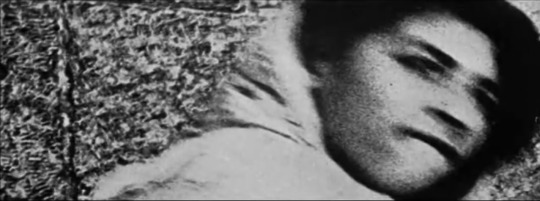
Ben Rivers - Slow Action (2011)
0 notes
Photo

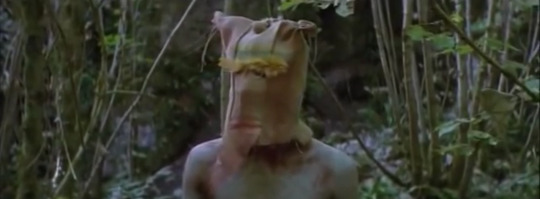
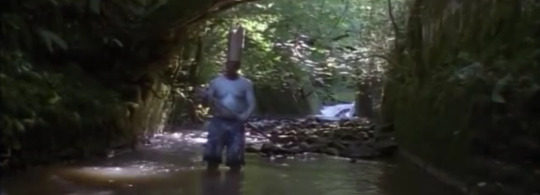
Ben Rivers - Slow Action (2011)
1 note
·
View note
Photo
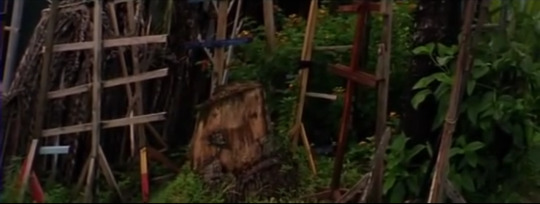
Ben Rivers - Slow Action (2011)
0 notes
Text


William Fowler: The islands are quite incredible and mysterious and, subsequent to your shooting of it, one turned up in the James Bond movie ‘Skyfall’. How did you find these places and did the discoveries lead to the film or vice versa?
Ben Rivers: I was looking for four islands that were significantly different from one another - so that the development of the human society was also related to the geography, climate, flora and fauna etc. It took me quite some time to decide upon the four and longer still to get to them. Lanzarote (Eleven) was the first – it is one of the driest places on Earth, so the strange volcanic landscape has not eroded away, resulting in huge planes of solidified lava streams. Dotted around the island are large sculptures, gardens and buildings designed by César Manrique, which also play a large part in creating the sci-fi atmosphere of the film. Tuvalu (Hiva – The Society Islands) was somewhere I had wanted to go since I read about it as a child, and when researching this film I read that it was in severe danger of being swallowed up by the rising Pacific. The fact that I had been thinking about this sad danger made it the right choice for a location. When I got there I found there was another depressing aspect of humans highlighted on the islands, which was plastics. Not so long ago Tuvalu started getting imported goods with plastic packaging from Fiji and other parts of the globe – but the landmass is so tiny, and hundreds of miles from anywhere, that the plastic heaps have built up to become a new colourful and toxic landscape – this then became entwined in the account. The third island, Gunkanjima (Kanzennashima) I’d seen on the really great architectural blog http://bldgblog.blogspot.co.uk/. I've always liked roaming around abandoned buildings, some of which have ended up in films, and Gunkanjima is something like the ultimate in abandoned spaces – a city for 5000 people on an island. For this space I wanted there to be an account within the account, from an even more unreliable narrator – so this island became home to one Tadashi Harai, a self-proclaimed madman. I haven’t seen Skyfall yet but I have a team of lawyers working on this case! For the last island I was going to go to Svalbard, an icy wonder halfway between the North of Norway and the North Pole. Just before I booked the flight I realised this was too easy, maybe not physically but conceptually – I wanted the camera to get closer to people in this last part, to get closer to the ethnographic I mentioned before. Somerset, my home, then became the fictional island – cut off and drifted apart from the rest of Britain somewhere in the very distant future. Various Somerset locations were then peopled with ‘Clades’, covered in mud and paint, wearing strange garb and holding remnants of objects whose original use has been forgotten and have transformed to talismans or weaponry. A place of permanent renewal.
http://www.vdrome.org/rivers.html


#v drome#video drome#ben rivers#william fowler#bfi#james bond#skyfall#Gunkanjima#Tuvalu#Hiva#Lanzarote#japan#geography#islands
0 notes
Text
Ethnography and Sci-Fi in Slow Action (2011)



‘Ben Rivers: The film was instigated as a commission for the Darwin anniversary, so I began thinking about the importance of islands to Darwin’s thinking, and how these were the perfect model for showing evolutionary change among a species. I had wanted to make a sci-fi film for sometime, so decided to set the film in the far future, after a time when sea levels have risen, land masses have changed and new islands and archipelagos have formed. I imagined these places would then be isolated from outside influence and their societies had then developed in very different ways, and within this what would constitute the idea of a utopia. The curator is an unseen head librarian of an archive of reports about these utopias, collected from around the world. It is an important point that the accounts are not wholly reliable, but rather have had to rely on a certain amount of imagination to fill the gaps in the reports that have made it back to the curator, which is why sometimes the image and narration don't quite correlate. The idea was that the film is a small fragment of a much larger set of accounts, so I could maybe make a sequel...
[…]
With Slow Action the distance became more pronounced, because this film was meant to play more on the idea of a scientific or ethnographic document. I wanted this distance to alter with the narration, which is why there are two different voices, one very cool and professional, much like a traditional TV documentary narrator, while the other is much harder to place tonally and geographically, who I took to be the present Curator. At the end of the film the more distanced narrator then starts to speak in the first person, which I hoped would throw the position of the narrator again.
http://www.vdrome.org/rivers.html

‘But with Slow Action the text was crucial, and had to be somewhat more impersonal, which is also mirrored in the scarcity of close-ups in the cinematography. This was intended to play with memories of ethnographic filmmaking, observing human beings for records, and turn this on its head sometimes, so that the voices do occasionally become questionable, and even at the very end, first person. I wanted to give the impression that this was part of a much larger work, or ‘Great Encyclopedia’ – that these are accounts from another fading race of humans, whose Utopia is a collection of other Utopias, and their accounts are trying to be as neutral as possible, but there are mistakes and slippages.
‘Are there any other films that use voiceover narration that you like? What is it in this form that interests you as a filmmaker?
Actually, I have a real problem with it as a filmmaker, and struggled with the idea that Slow Action would need a lot of narration, even though it was at the core of the film. I am much more interested in films that can say things without words, but that is clearly not this film – and also some of my previous films, where a person's voice seems so much part of the world I’m attempting to make a film within. Still, I have found solace in films like Tourou et Bitti by Jean Rouch, where he explains exactly what he and his sound recordist are doing along with what we are seeing on the film; Fata Morgana and other Herzog films; some Agnes Varda films like Daguerreotypes; and perhaps mostly Las Hurdes: Tierra sin Pan [Land Without BreadI] by Buñuel.’
http://www.soundandmusic.org/features/sound-film/listening-ben-rivers-slow-action
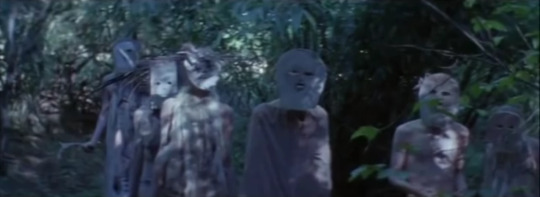

#Ethnography#ben rivers#slow action#Sci-Fi#v drome#video drome#Herzog#Fata Morgana#Buñuel#Jean Rouch#sound and music
1 note
·
View note
Video
youtube
Slow Action (2011) - Ben Rivers
‘The 16mm footage of volcanic landscapes, ruined cities, junk-filled lagoons and woodland-dwelling tribes appears both alien and familiar, historical and futuristic, as if it could have been unearthed from a long-forgotten archive or discovered in a time capsule.’
http://www.soundandmusic.org/features/sound-film/listening-ben-rivers-slow-action
1 note
·
View note
Text
Ben Rivers - Slow Action (2011)

‘Slow Action […] is a post-apocalyptic science fiction film [...] 16mm works which exist somewhere between documentary, ethnographic study and fiction.
Slow Action applies the idea of island biogeography - the study of how species and eco-systems evolve differently when isolated and surrounded by unsuitable habitat - to a conception of the Earth in a few hundred years; the sea level rising to absurd heights, creating hyperbolic utopias that appear as possible future mini-societies.
Slow Action is filmed at different sites across the globe: Lanzarote - a beautiful strange island known for its beach resorts yet one of the driest places on the planet, full of dead volcanoes and strange architecture; Gunkanjima - an island off the coast of Nagasaki, Japan, a deserted city built on a rock, once home to thousands of families mining its rich coal reserves; Tuvalu - one of the smallest countries in the world, with tiny strips of land barely above sea level in the middle of the Pacific; and Somerset - an as yet to be discovered island and its various clades.
This series of constructed realities explores the environments of self-contained lands and the search for information to enable the reconstruction of soon to be lost worlds.
The film’s soundtrack - narratives by writer Mark von Schlegell - detail each of the four islands’ evolutions according to their geographical, geological, climatic and botanical conditions.
Slow Action, inspired by novels such as Samuel Butler’s Erewhon, Bacon’s The New Atlantis, Herbert Read’s The Green Child and Mary Shelley’s The Last Man, embodies the spirit of exploration, experiment and active research that has come to characterise Rivers’ practice.’
http://www.mattsgallery.org/artists/rivers/exhibition-1.php
#Ben Rivers#moving image#film#slow action#matt's gallery#biogeography#eco-systems#Gunkanjima#Tuvalu#Mark von Schlegell#Samuel Butler#Mary Shelley#The New Atlantis
1 note
·
View note
Text
X-Ray Train — Lumiere Bros to SHIMURABROS (2007)

‘The duo, whose name is derived from various brothers involved in the film and art world — Warner Bros., Coen Bros. and Chapman Bros — strive to recreate, in all of their work, the same level of shock and effect that “Arrival of a Train at La Ciotat” by the Lumiere Brothers, one of the first-ever films, was received with in 1895.
“We start with film, and when we shoot a film it is connected to the Lumiere brothers,” explains Yuka.
“(In 1895), the audience thought a real train was coming (into the theater), so the brothers had real power through their images. But now, when we watch the same film we don’t actually think it’s a real train. We want to try to gain that same initial effect and power.”’
http://www.japantimes.co.jp/culture/2010/05/14/arts/mickey-springs-his-mouse-trap/#.VZaYUefUY-Z

‘Japanese audiences are very respectful - quiet and static. They sit and watch, but don't go around the pieces. When we showed EICON in Paris, the audience went behind the screen and touched it to feel its physicality. In Vienna we showed X-Ray Train at MQ Museum Quatier and there people went between the screens. I asked one man why, and he said it was very exciting because he felt as if the train was coming towards him. Some children were trying to catch the screen, so we thought they must have also felt the existence of the image.’
http://www.art-it.asia/u/admin_interviews/DG0dFRCKQ1w9HkqVIiOj?lang=en
#X-Ray Train#Lumiere Bros#SHIMURABROS#japan times#ART iT#MQ Museum Quatier#japan#art#film#moving image#EICON Paris
0 notes